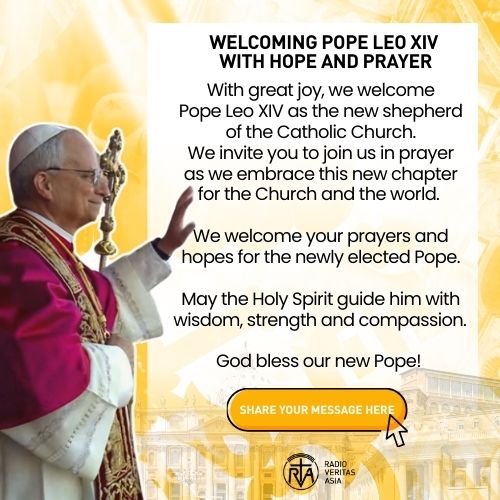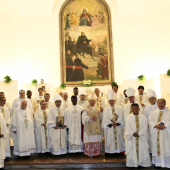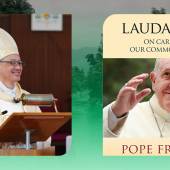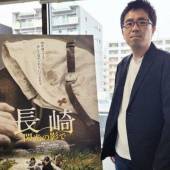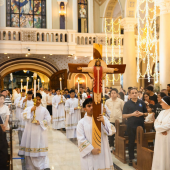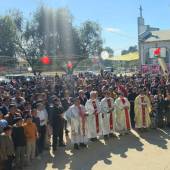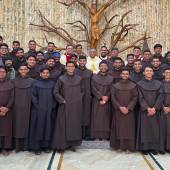In the Shadow of the Bomb, a Saint’s Mission Still Blooms in Japan
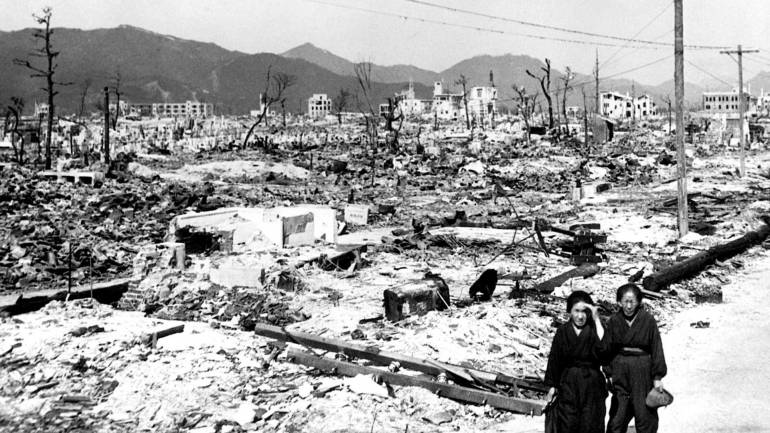
Eighty years ago, the world saw two of the most devastating acts of war in history, the atomic bombings of Hiroshima and Nagasaki. On Aug. 9, 1945, the blast over Nagasaki killed tens of thousands instantly and wiped out much of the city, including the cathedral that had been the heart of Japan’s most Catholic community.
Yet, high on the slopes of Mount Hikosan, one humble Franciscan friary remained standing. Known today as Seibo no Kishi, it was the work of a Polish missionary who would one day be canonized, St. Maximilian Kolbe.
According to a story published in the Catholic Register, Kolbe arrived in Japan in 1930 with nothing more than his brown Franciscan habit, his missionary zeal, and a burning desire to spread devotion to the Blessed Virgin Mary. He had already founded the Militia Immaculata (MI) movement in Italy and the vast friary of Niepokalanów in Poland. Japan was his next frontier.
“He didn’t even know the language,” said Annamaria Mix, an American consecrated virgin who works in the Militia Immaculata Archive in Poland. “But when the bishop of Nagasaki offered him a place on the condition that he would teach in the seminary, Kolbe accepted without hesitation.”
The land he purchased, four rugged hectares for the equivalent of $46, was far from the city center. But the friar embraced the challenge, leveling the hillside by hand and naming the site Mugensai no Sono, The Garden of the Immaculate.
The Catholic Register story notes that from this unlikely base, Kolbe began publishing a Japanese edition of the MI magazine Seibo no Kishi (Knight of the Immaculata) and formed a small religious community dedicated to evangelization. While exploring the property, he discovered a natural spring and dreamed of building a Lourdes-style grotto. “Deeply devoted to Our Lady of Lourdes,” Mix explained, “Kolbe saw the grotto as a spiritual anchor and a symbol of healing.”
The friary became a quiet beacon of faith in a largely non-Christian country. Kolbe admired what he called “the openness of the Japanese people to divine truth” and prayed constantly for their conversion. The Catholic Register story recounts that, contrary to local legend, Kolbe did not choose the site because of a prophetic vision of the atomic bomb, the friary survived simply because a mountain ridge shielded it from the blast.
In 1942, the friars consecrated the community to St. Joseph, a gesture they believe further protected it. When the atomic cloud darkened Nagasaki three years later, the friary and its Lourdes grotto stood untouched, a testament, the friars say, to God’s providence.
Today, the mission Kolbe founded continues. The friary still publishes Seibo no Kishi, welcomes pilgrims, and houses a small museum dedicated to the saint’s work in Japan. Visitors encounter not just a story of wartime survival, but of a missionary who believed peace would come not through force, but through hearts surrendered to God.
Kolbe’s own life ended in another place of destruction, Auschwitz, where in 1941 he gave his life in exchange for another prisoner’s. Canonized by St. John Paul II in 1982, he remains a symbol of sacrificial love.
“The mission Kolbe started didn’t end with his death,” Mix said to Catholic Register. “It continues here in Nagasaki and wherever the Militia Immaculata is at work. He reminds us that true peace begins in the heart, and that’s the seed he planted in Japan.”
Radio Veritas Asia (RVA), a media platform of the Catholic Church, aims to share Christ. RVA started in 1969 as a continental Catholic radio station to serve Asian countries in their respective local language, thus earning the tag “the Voice of Asian Christianity.” Responding to the emerging context, RVA embraced media platforms to connect with the global Asian audience via its 21 language websites and various social media platforms.


